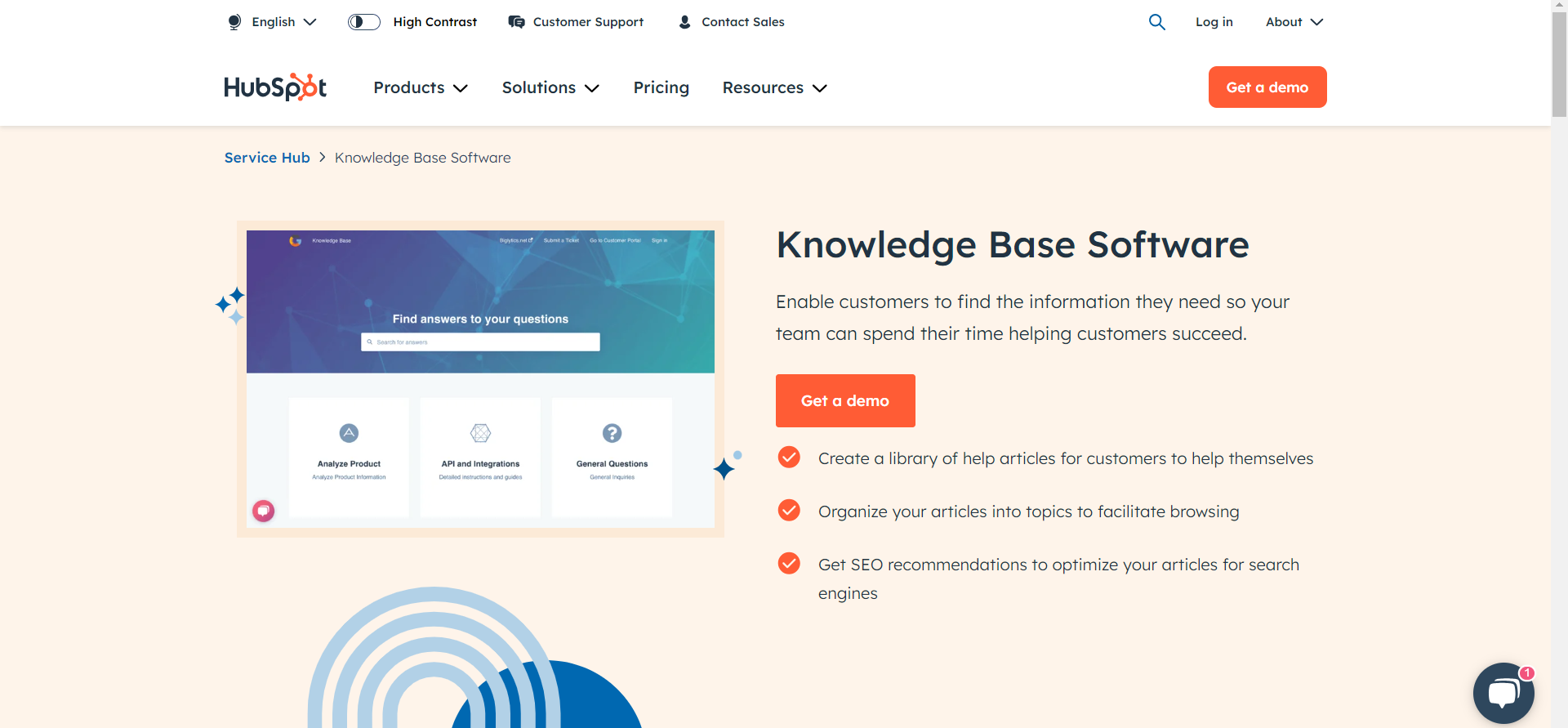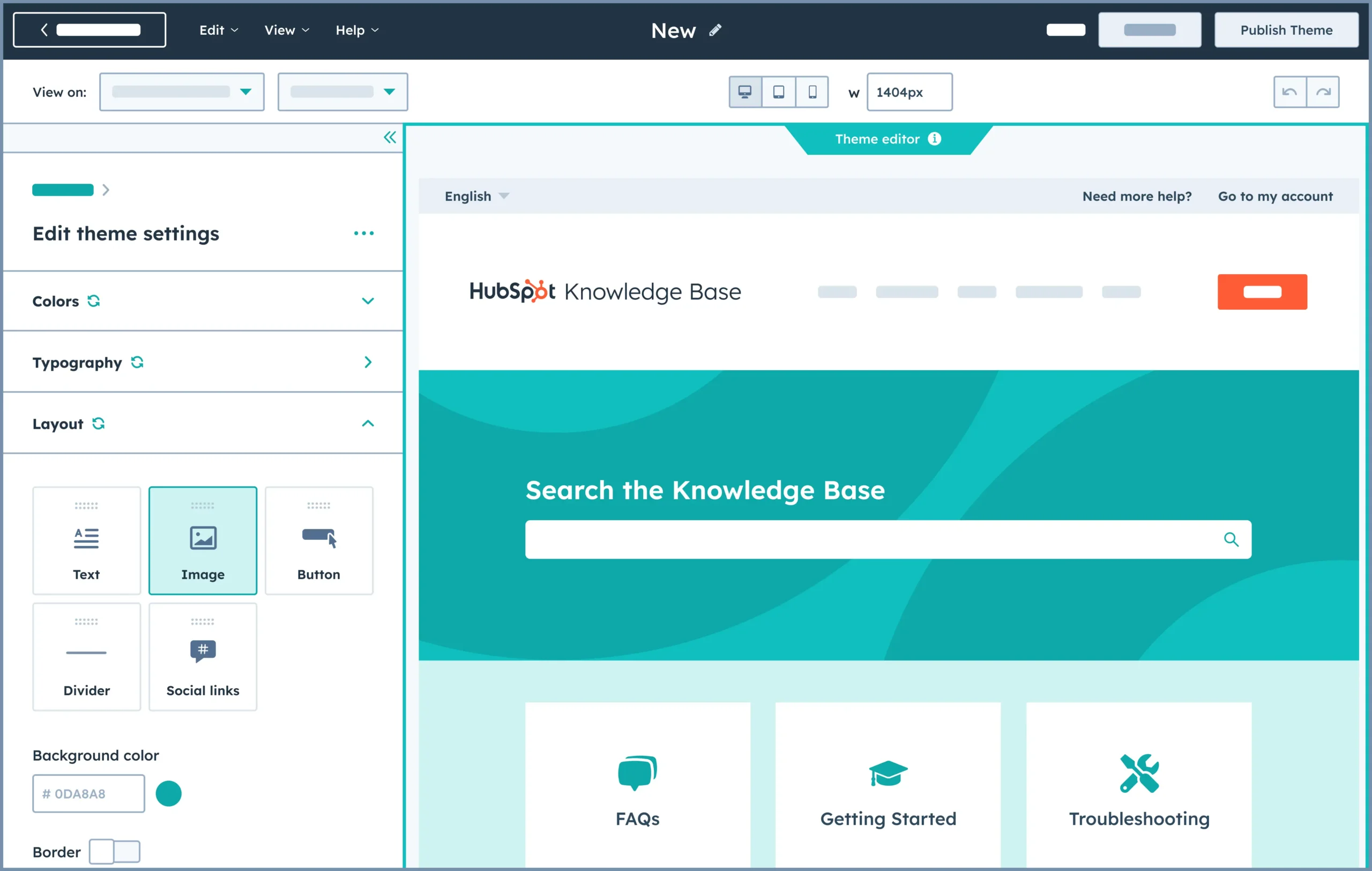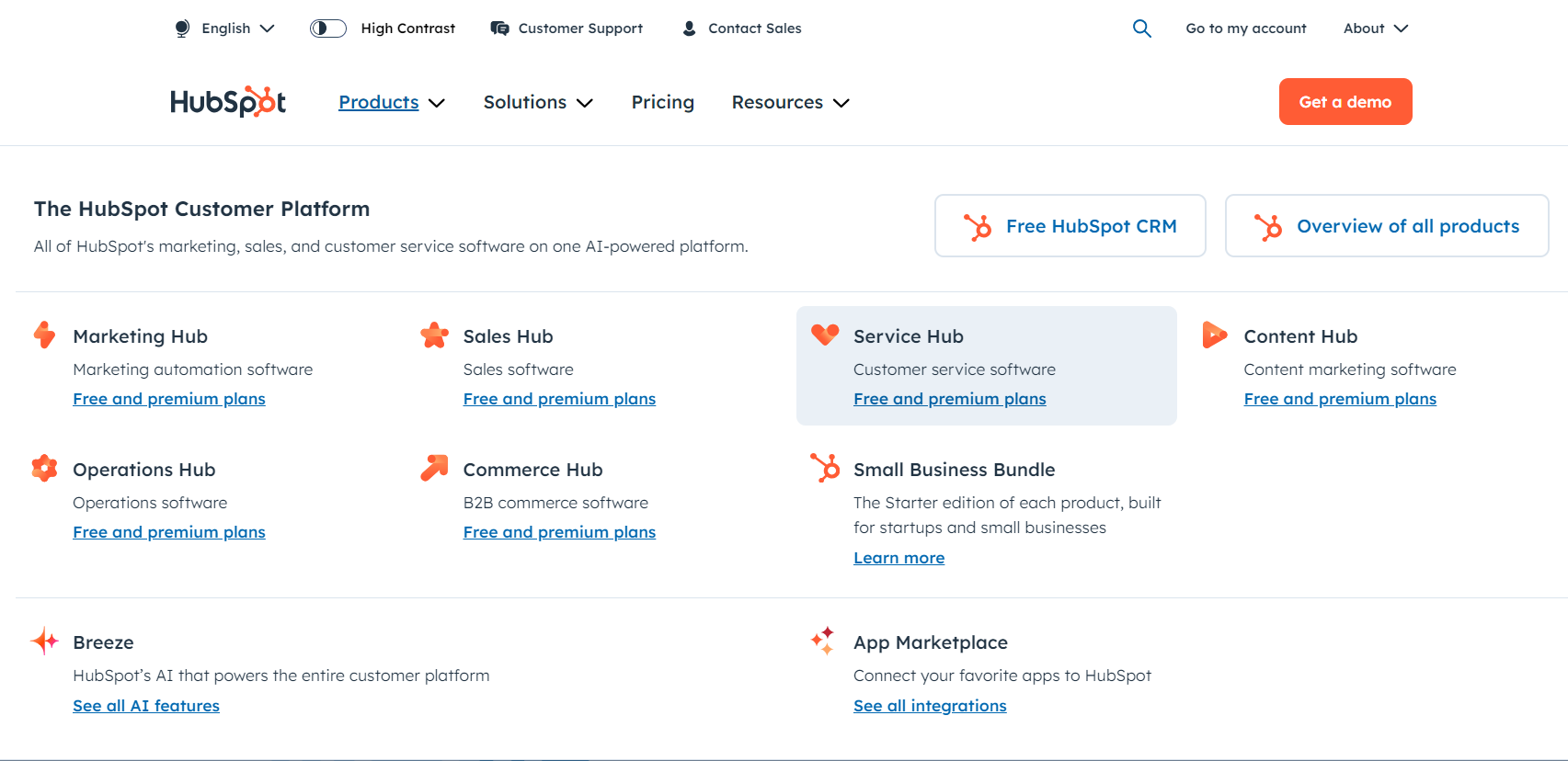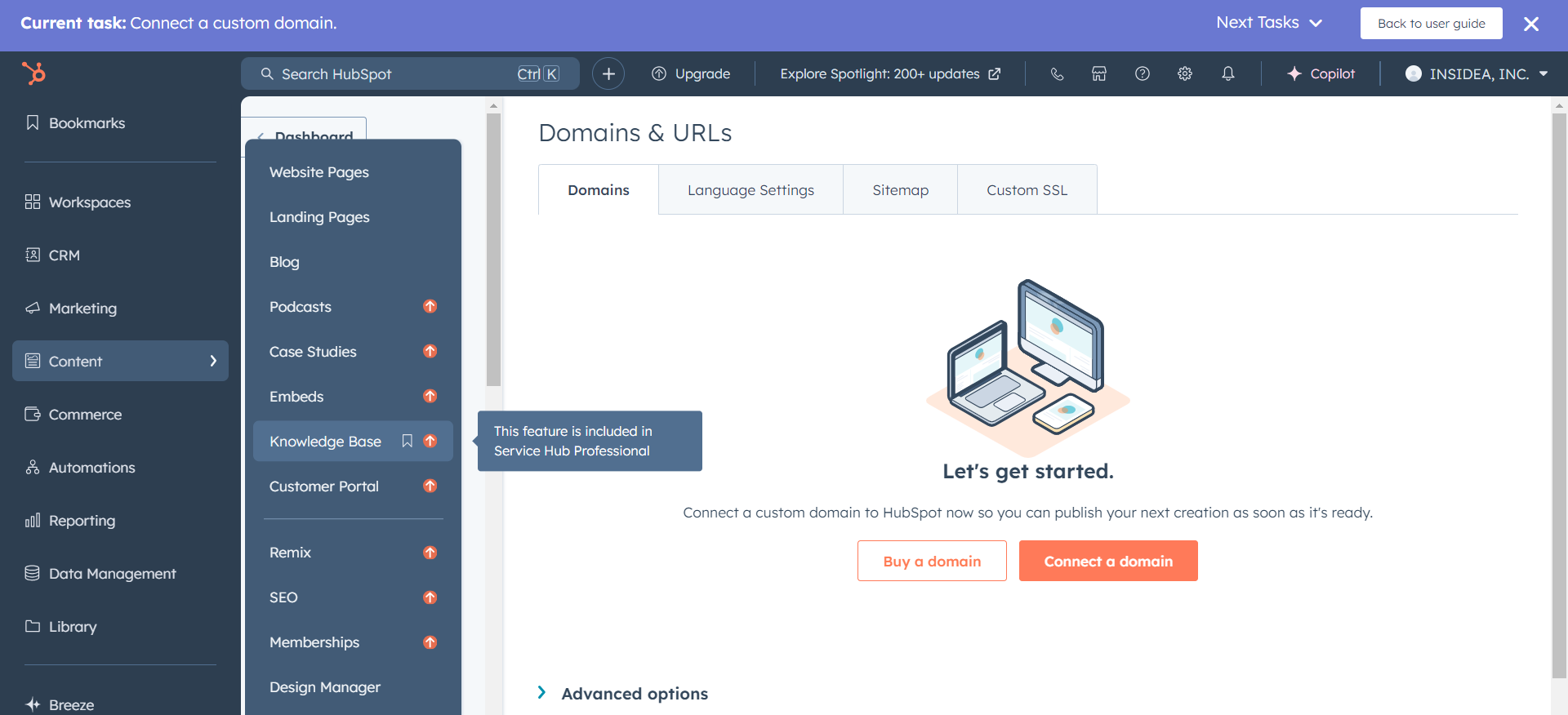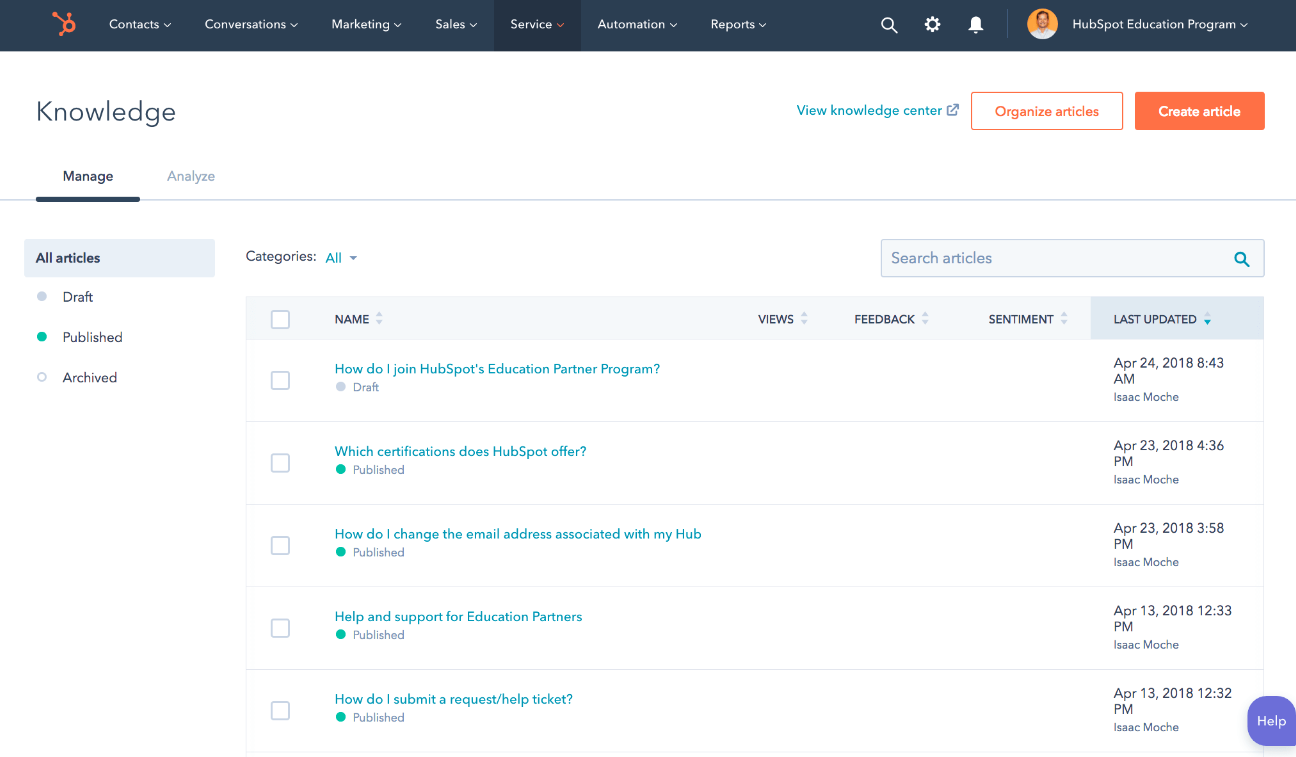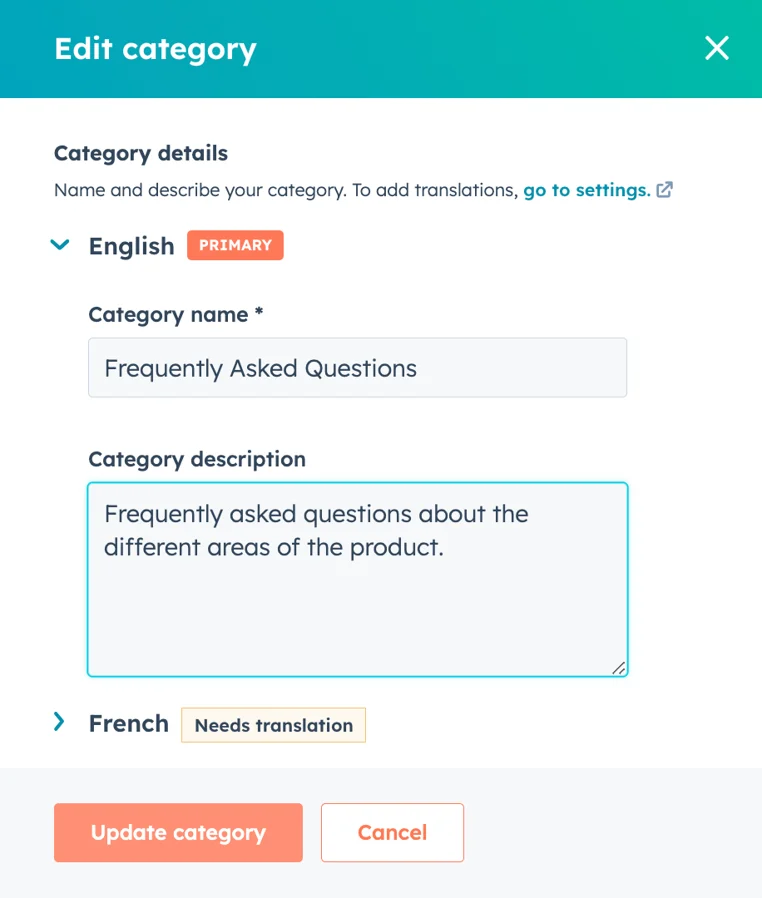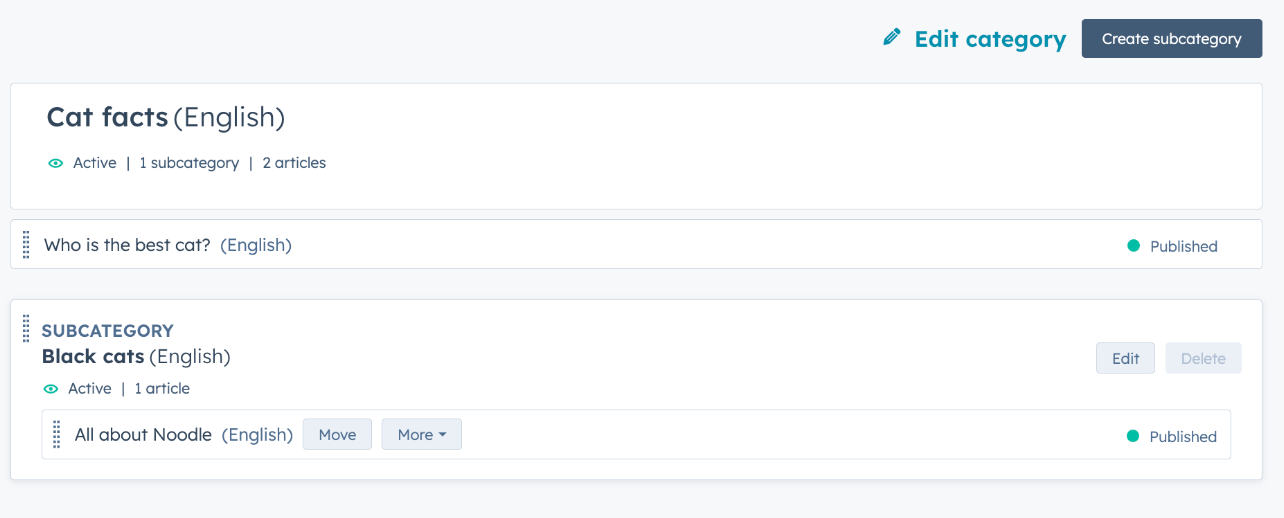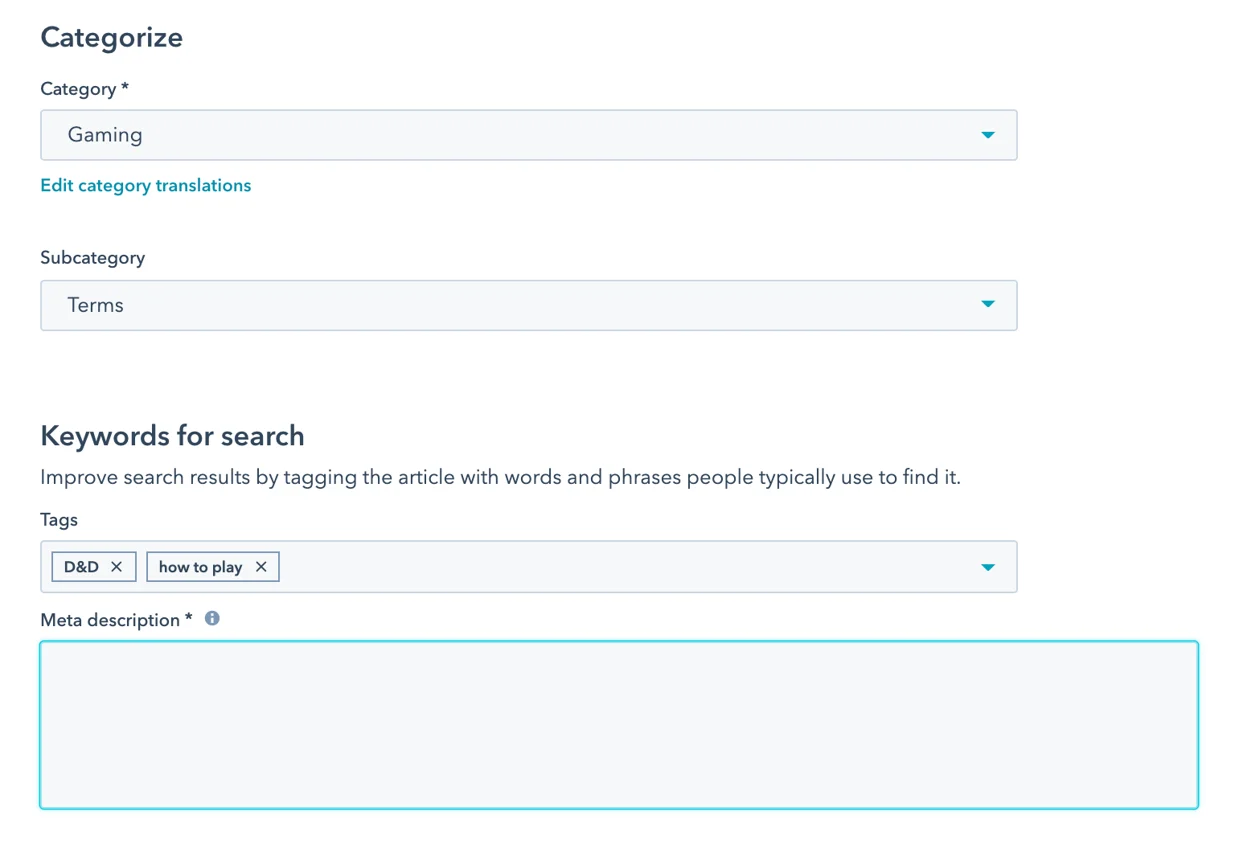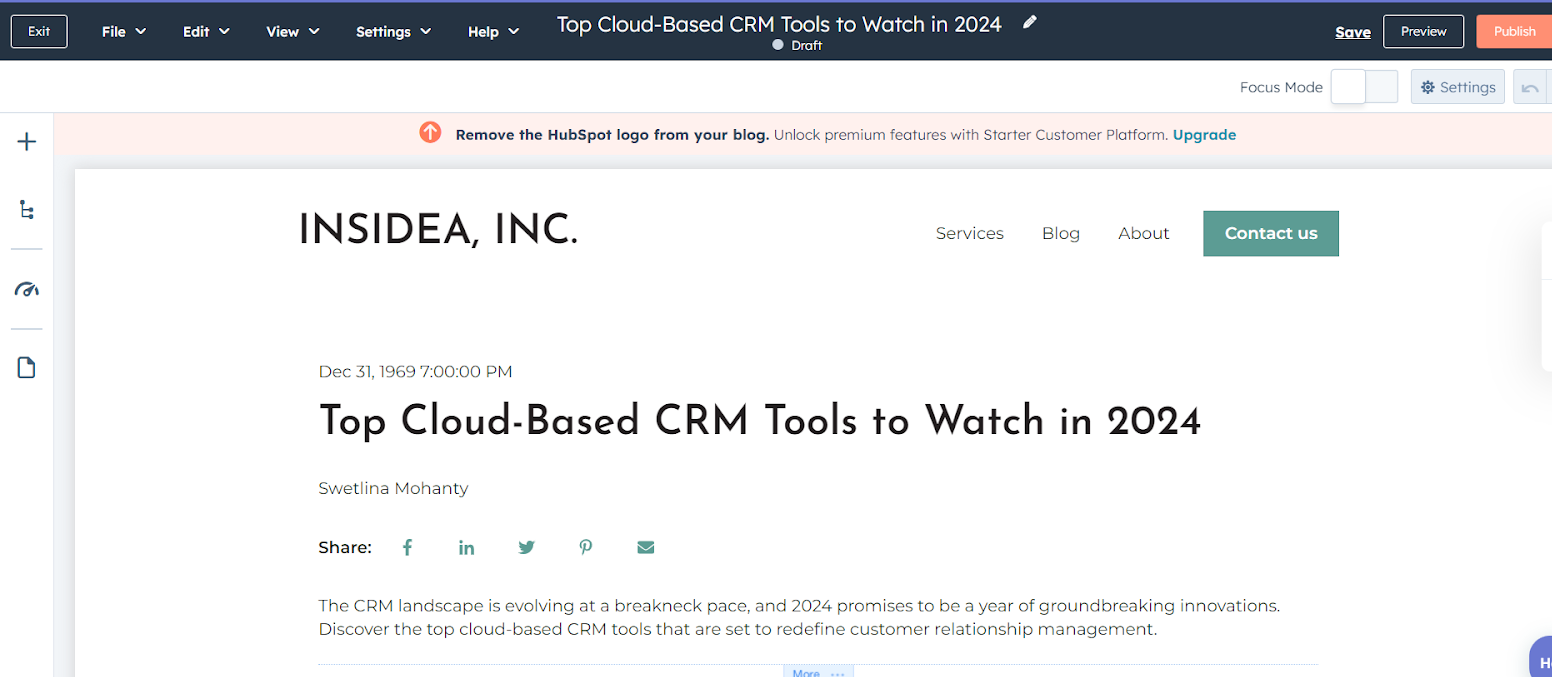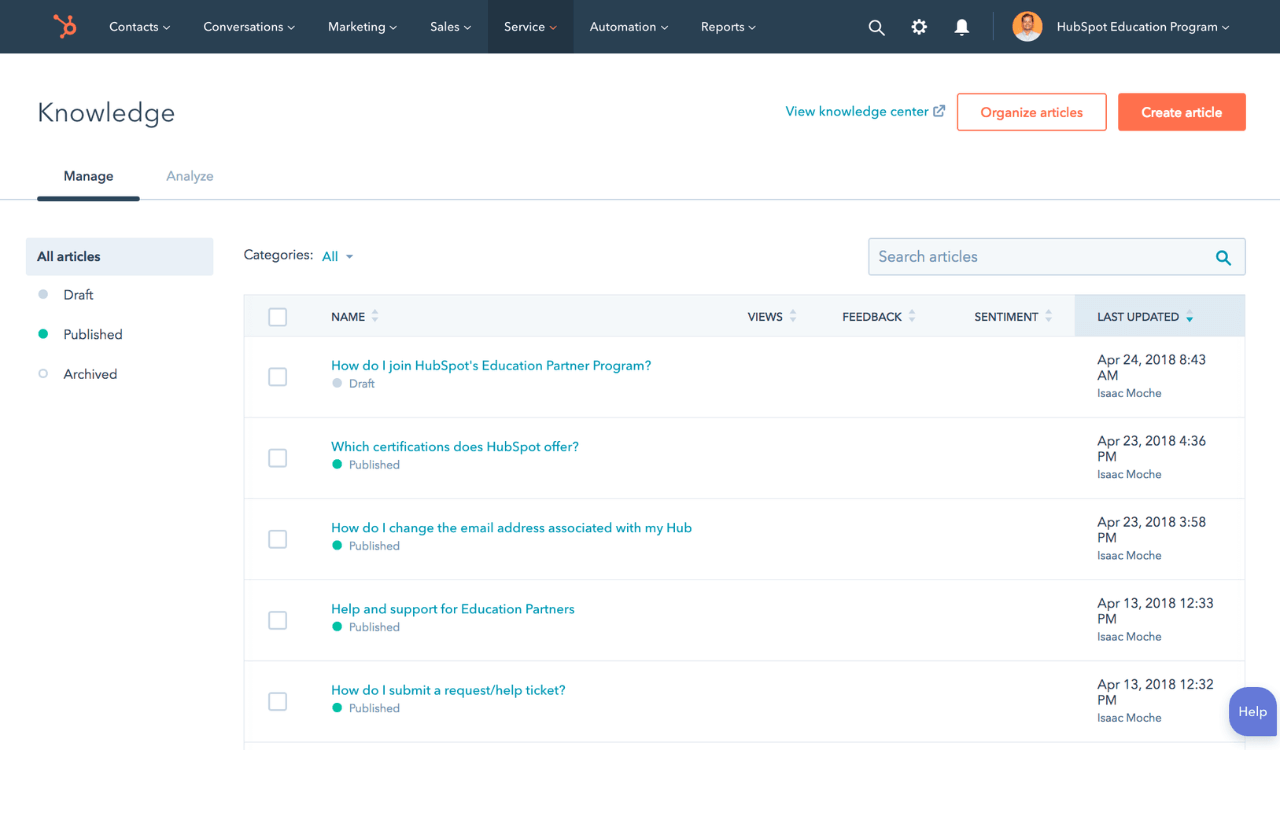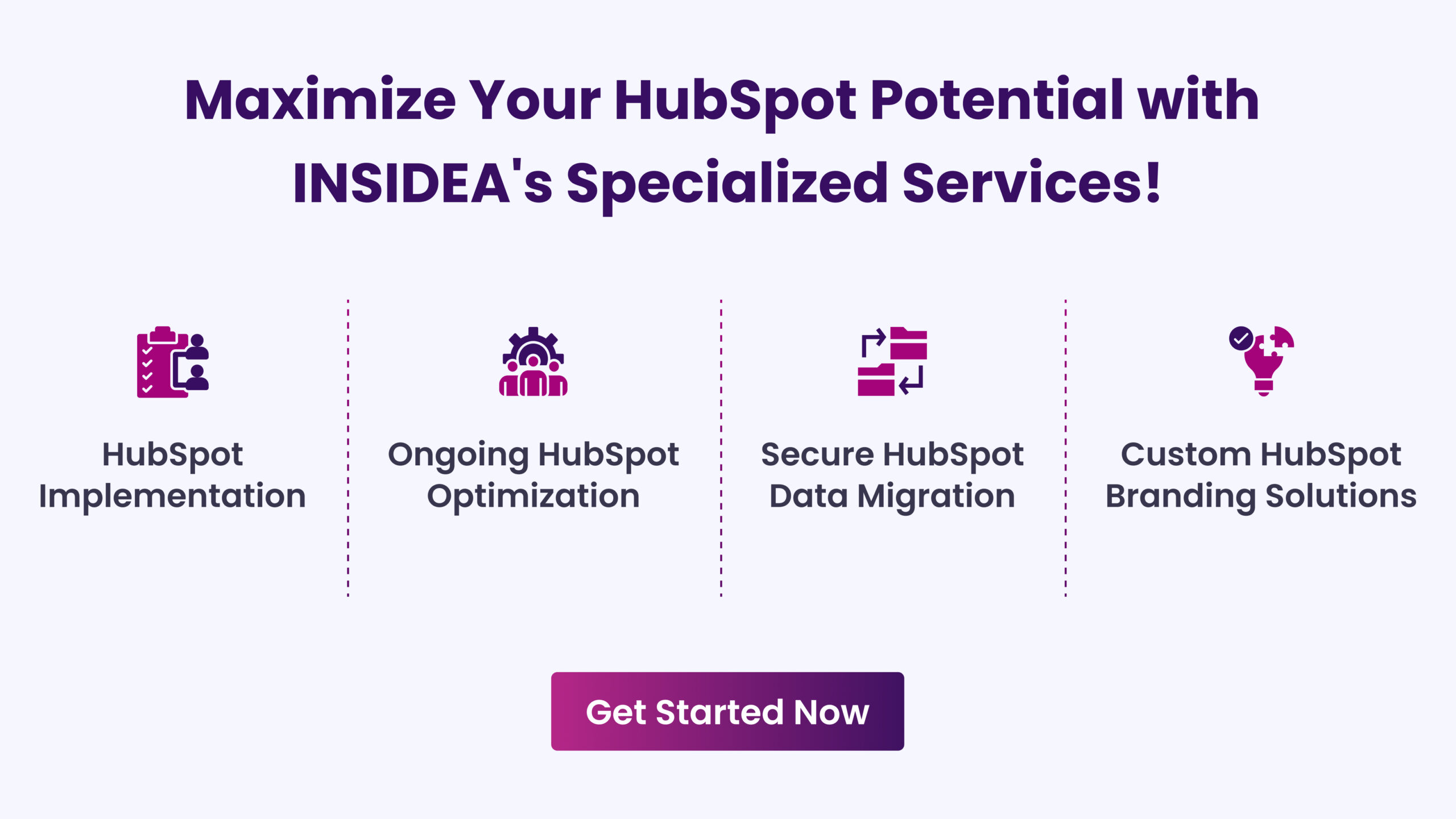When customers try to troubleshoot an issue with your product, they usually expect an answer instantly—not in hours, not even minutes. They expect lightning-fast support, and they’ll lose patience if they don’t get it.
In fact, research shows that 72% of customers expect immediate service. For businesses, this pressure can overwhelm support teams, forcing them to constantly juggle basic inquiries with more complex problems.
Providing customers instant access to essential information—troubleshooting steps, best practices, product details—is crucial for any business. HubSpot’s Knowledge Base Software creates a centralized, searchable hub where customers quickly find the answers they need, reducing wait times and increasing customer satisfaction. This self-service solution optimizes operations, allowing your support team to focus on more complex challenges. The result? Faster resolutions, happier customers, and a more efficient business.
The Necessity of a Knowledge Base Software
Support teams know the struggle: repetitive questions, endless tickets, and slower response times. These drain productivity and impact customer success and satisfaction. When people can’t find quick answers, it affects the brand experience.
A knowledge base software provides a centralized, searchable library of FAQs, guides, and support articles; customers can easily find the solutions they need without waiting for support responses.
A well-structured knowledge base includes the following fundamental components to enhance usability:
Search bar: Helps users find information quickly using keywords.
Categories: Organizes content into sections, making it easier to navigate.
Content management tools: Ensures regular updates to maintain accuracy and relevance.
Advanced options include:
AI content suggestions: Helps identify gaps or outdated content for improvement.
Generative AI: Assists in creating and refining articles.
Analytics: Offers insights into user behavior, highlighting popular searches and frequently used content.
Types of Knowledge Base Software
When it comes to knowledge base software, there are two primary types: Internal and External.
Internal knowledge bases support employees and teams, providing immediate access to critical information to ensure efficient operations. External knowledge bases serve customers, offering a self-service platform that allows them to quickly access important product or service information independently.
Let’s take a quick look at how these two compare:
| Features | Internal Knowledge Base | External Knowledge Base |
| Primary Audience | Employees and internal teams | Customers and the general public |
| Content Focus | Internal processes, guidelines, policies, training, and collaboration tools | FAQs, product/service guides, troubleshooting, and support articles |
| Access | Restricted to employees or specific internal users | Publicly accessible or for customers with user accounts |
| Purpose | Streamline internal operations and improve team productivity | Provide customers with self-service support to reduce inquiries |
| Customization | Customized according to the organization’s internal needs | Customized according to address customer needs and external support |
| Security Level | High-level security for sensitive company information | Secure but designed for public or customer access |
| Collaboration | Allows teams to collaborate and share knowledge internally | Primarily focused on providing information, not collaboration |
| Analytics | Tracks employee use and knowledge gaps | Tracks customer behavior, popular searches, and content engagement |
| Examples | Internal wikis, employee handbooks, training portals | Help centers, support portals, FAQ pages |
What is HubSpot’s Knowledge Base Software?
HubSpot’s Knowledge Base Software equips businesses with a centralized platform to efficiently create, publish, and organize valuable articles that address common customer inquiries. This reliable self-service resource allows users to find answers quickly without needing direct support.
Fully integrated with HubSpot’s Service Hub, it enables businesses to monitor customer interactions and identify opportunities to enhance knowledge base content for maximum engagement. This integration helps reduce the workload on support teams and improves the customer experience by providing quick and easy-to-access solutions.
Why Is HubSpot’s Knowledge Base Software Preferred?
When it comes to optimizing your support operations and giving customers the ability to find solutions on their own, HubSpot’s Knowledge Base Software is the ideal tool. It offers powerful self-service capabilities while freeing your support team for more complex tasks.
Let’s explore some of the impressive features that make it a valuable addition to your business:
Easy Setup and Customization: The Knowledge Base Software makes it easy to create articles, FAQs, and tutorials with customizable tags, categories, and search terms.
SEO-Optimized Content: Each article is optimized for search engines, increasing the likelihood that customers will find your knowledge-based content through Google searches.
Automated Workflows: HubSpot allows businesses to create automated workflows that trigger based on customer interaction with the knowledge base, such as sending follow-up emails or offering additional resources.
Performance Monitoring: The platform includes insights such as ticket deflection rates, engagement metrics, and customer feedback, giving you a clear picture of how well your knowledge base serves its purpose.
Mobile-Friendly Interface: Knowledge-based content is fully responsive, ensuring customers can access helpful resources from any device.
Implementing HubSpot’s Knowledge Base Software
To get the most out of HubSpot’s Knowledge Base Software, businesses should follow these steps:
- Set Clear Objectives: Define Key Performance Indicators (KPIs) such as article engagement rates or ticket deflection percentages to measure the success of your knowledge base.
- Assign a Knowledge Base Manager: Designate a team or individual responsible for maintaining and updating the knowledge base, ensuring it remains relevant and effective.
- Track Customer Trends: Use the software’s built-in analytics to identify recurring questions and create articles based on these insights.
- Update Articles Regularly: Keep your knowledge base current by revisiting articles after product updates or as new questions arise.
- Encourage Team Use: Ensure your support team utilizes the knowledge base when interacting with customers to maintain consistency in responses.
Steps to Create a Knowledge Base on HubSpot
Step 1: Access the Knowledge Base
Log in to your HubSpot account, navigate to the Service Hub, and select Knowledge Base from the menu. This opens the setup area for creating new articles.
Step 2: Create a New Article
Click on the Create Article button in the upper right corner of the dashboard. In the editor, input the title and an optional subtitle to help categorize the article.
Step 3: Write the Article Content
Use the editor to add content. The rich text editor allows text formatting, hyperlink insertion, and adding media (e.g., images and videos). You can also include internal links to other knowledge-base articles for better navigation.
Step 4: Categorize Your Articles
In the article editor, assign categories and tags. Select an existing category or create a new one, and use tags to link related topics and improve search functionality.
Step 5: Customize SEO Settings
Go to the Settings tab to customize the article’s URL slug and add a meta description for search engine optimization (SEO). This improves the article’s visibility on search engines.
Step 6: Set Article Visibility
Under Control audience access, choose whether the article should be Public (accessible to all users) or Private (restricted to registered users or those with Single Sign-On (SSO) access).

Step 7: Preview and Publish
Use the Preview feature to see how the article looks on different devices. When satisfied with the layout and content, click Publish to make the article live.
Step 8: Organize Your Knowledge Base
Go to the Knowledge Base dashboard and use Manage Categories to better organize your articles. You can create categories and subcategories and use drag-and-drop functionality to reorder articles for a logical structure.
Step 9: Monitor Performance
Check the Reporting section to track article performance in terms of views, engagement, and ticket deflection rates. Use this data to update existing articles or create new content based on customer needs.
Is HubSpot’s Knowledge Base Software More ‘Base’ or ‘Brilliant’?
HubSpot’s Knowledge Base Software is much more than a repository of FAQs—it’s the secret weapon that enables your customers to become self-sufficient problem solvers. No more drowning in repetitive questions or bogging down your support team with minor issues. With AI-driven insights and real-time performance tracking, every article becomes a living, breathing part of your customer experience strategy.
And the best part? It integrates smoothly with HubSpot CRM, aligning every piece of content with your larger business goals. Think of it as the ultimate assistant who never sleeps, never tires, and always knows the answer (because, well, you wrote it!).
Maximize Your HubSpot Potential with INSIDEA’s Specialized Services!
As a HubSpot Diamond Solutions Partner, we take pride in assisting you in streamlining your HubSpot efforts. With our best-in-class marketing, sales, and service solutions, we help you scale exponentially. INSIDEA’s HubSpot Specialists have the required in-depth knowledge and can provide expert guidance on how to use the platform to meet your business needs.
Explore the range of services we offer:
- HubSpot Onboarding: Seamless onboarding process to get your team up to speed and fully integrated with all HubSpot features.
- HubSpot Management: Ongoing management ensures your HubSpot environment runs at peak efficiency.
- HubSpot Migration: Smooth and secure migration services that protect your data and enhance your CRM capabilities.
- HubSpot White-Label Solutions: Exclusive white-label services tailored to your brand, allowing you to offer branded HubSpot solutions.
At INSIDEA, we understand the importance of valuable HubSpot strategies that understand your target audience and drive conversions. Book a meeting with our HubSpot experts to explore how we can help you with your upcoming projects.





